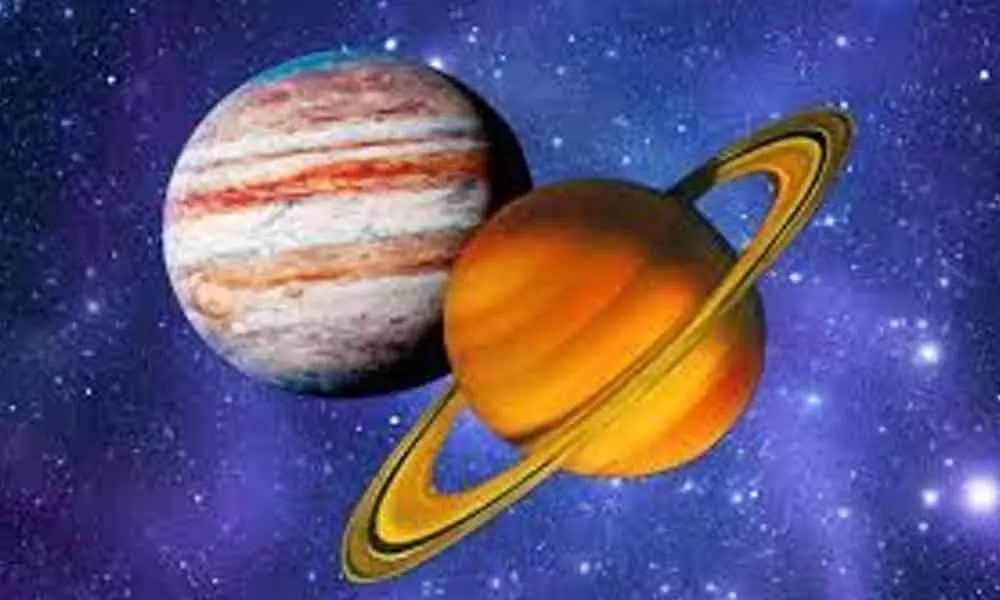Great conjunction of Jupiter-Saturn to dazzle skygazers on Dec 21

Great conjunction of Jupiter-Saturn to dazzle skygazers on Dec 21
Two planets have never been so close since 1623, conjunction may be seen just after sunset
New Delhi: In a rare celestial event, Jupiter and Saturn will be seen very close to each other on December 21, appearing like one bright star. The two planets have never been so close since 1623, and hence, the term 'a great conjunction', director of M P Birla Planetarium, Debi Prasad Duari, said in a statement.
'If two celestial bodies visually appear close to each other from Earth, it is called a conjunction. And such conjunction of Saturn and Jupiter is at times called a great conjunction,' he said. The planets will next come comparably close on March 15, 2080.
On the night of December 21, their physical distance will be around 735 million km, Duari said. In the run-up to the date, both planets will appear to progressively come closer to each other, with every passing day, he said.
In most major cities across India, the conjunction could be seen just after sunset.
Meanwhile, the ascender of China's Chang'e-5 probe successfully rendezvoused and docked with the orbiter-returner combination in lunar orbit on Sunday, the China National Space Administration (CNSA) has announced. This is the first time Chinese spacecraft have carried out rendezvous and docking in lunar orbit, reports Xinhua news agency.
The samples collected on the moon had been transferred from the ascender to the returner safely by 6.12 a.m., said the CNSA. Chang'e-5 is one of the most complicated and challenging missions in Chinese aerospace history, as well as the world's first moon-sample mission in more than 40 years.
The Chang'e-5 probe, comprising an orbiter, a lander, an ascender and a returner, was launched on November 24, and its lander-ascender combination touched down on the north of the Mons Rumker in Oceanus Procellarum, also known as the Ocean of Storms, on the near side of the moon on December 1.
After the samples were collected and sealed, the ascender of Chang'e-5 took off from the lunar surface on December 3.
Although China's spacecraft had carried out several rendezvous and docking operations in low-Earth orbit, an unmanned rendezvous and docking in lunar orbit, around 380,000 km away, is much more difficult.
The orbiter-returner combination gradually approached the ascender through long-range guidance and short-range autonomous control, and captured the ascender with holding claws.
"We used an innovative error-compensation algorithm to further improve the angle-measurement accuracy, which greatly enhanced the chances of a successful, precise docking," said He Zhongqin, a designer on the microwave radar project.
Next, the orbiter-returner will separate from the ascender, and wait for the right time to return to Earth.
China also successfully launched a new Earth observation satellite from the Xichang Satellite Launch Centre in Sichuan province.
The launch took place at 11.58 a.m., Xinhua news agency reported. The satellite, Gaofen-14, was sent into orbit by a Long March-3B carrier rocket.

















